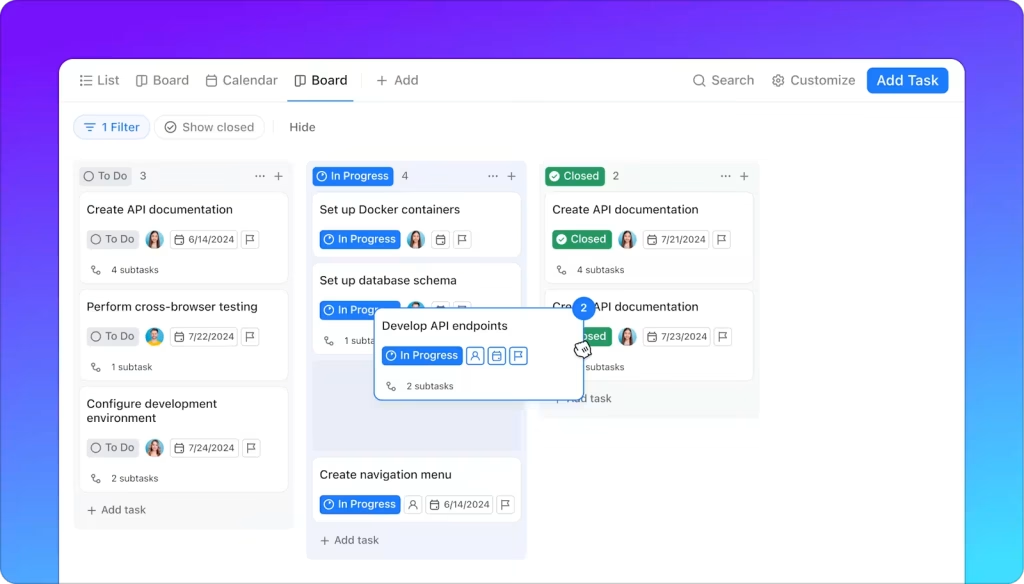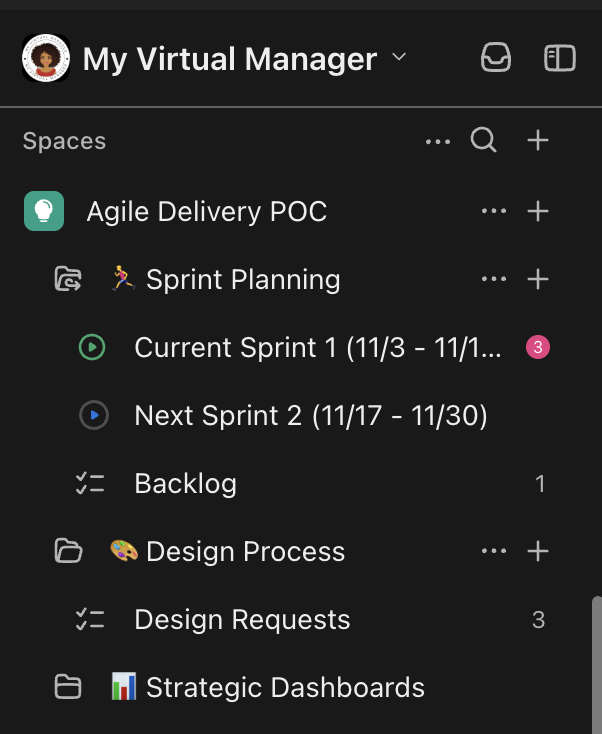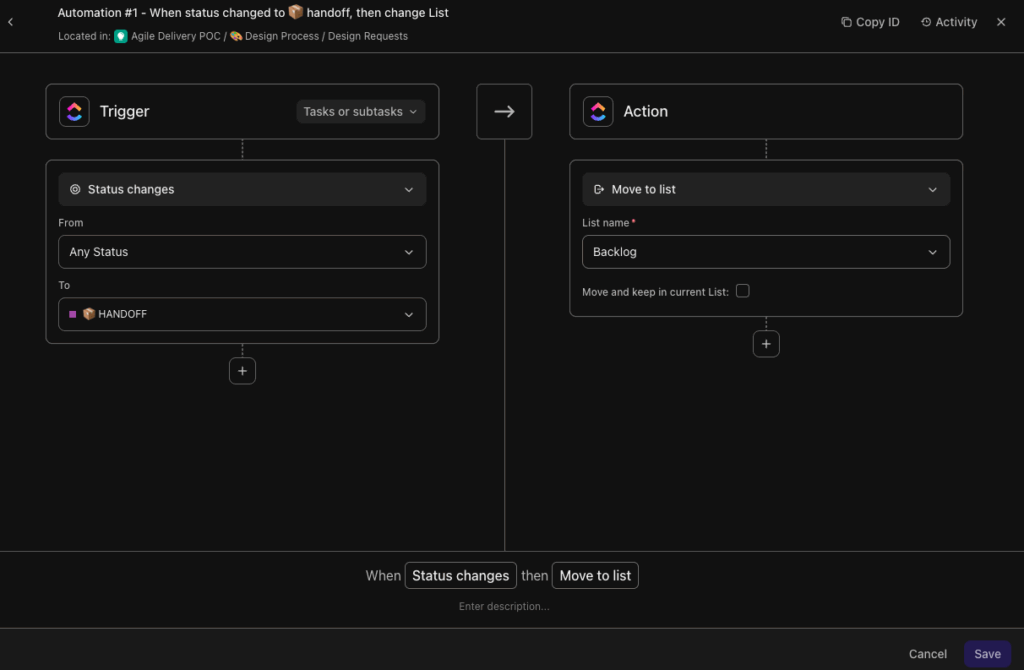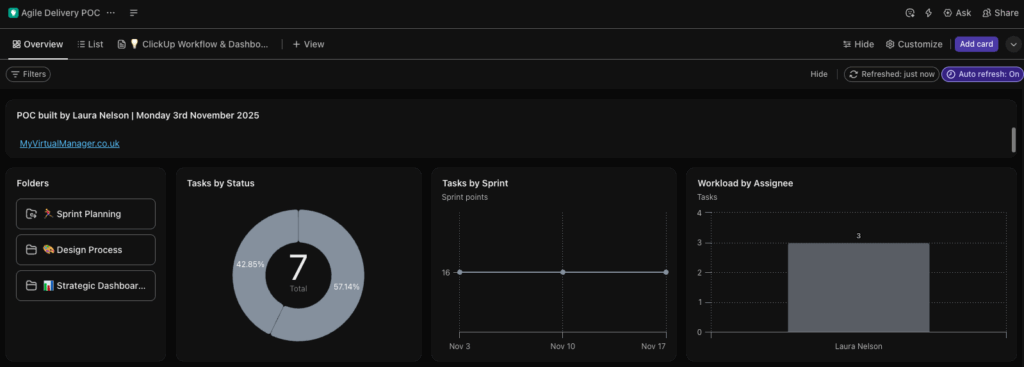🚦 Is Your ClickUp Workflow Slowing You Down?
If your ClickUp workspace feels more like a maze than a productivity machine, you’re not alone. Most teams start with the best intentions — new spaces, colourful tags, and endless automations — but over time, things get messy.
Tasks get lost, dashboards clutter up, and “urgent” becomes a daily word.
The good news? You don’t need to start over — you just need to streamline your ClickUp workflow for faster, clearer delivery.

⚙️ Step 1: Audit What You Have
Before adding anything new, take a snapshot of your current system. Ask yourself:
- How many Spaces, Folders, and Lists do you actually use?
- Are there duplicate or overlapping lists?
- Which automations are still relevant — and which are firing unnecessarily?
💡 Pro Tip: Create a temporary “Audit Dashboard” that displays active tasks by Space and Owner. You’ll quickly see where work is stuck or duplicated.

🧩 Step 2: Simplify Your Hierarchy
A cluttered structure is the #1 killer of productivity.
Here’s a simple structure to keep everyone aligned:
| Level | Purpose | Example |
|---|---|---|
| Space | A department or business area | “Client Projects”, “Marketing”, “Internal Ops” |
| Folder | A process or project type | “Onboarding”, “Campaigns”, “Templates” |
| List | Active projects or repeating workflows | “Client ABC Website”, “Weekly Tasks” |
➡️ If your team needs more than 5 clicks to find a task, your structure is too deep.

🤖 Step 3: Automate the Routine, Not the Creative
Automation is where ClickUp shines — but only if you use it strategically.
Start with low-value, repetitive actions such as:
- Assigning recurring tasks
- Moving statuses when checklists are complete
- Setting due dates when new tasks are created
Then connect via ClickUp Automations, Zapier, or Make to remove admin noise.
💡 Example:
“When task status changes to In Review, notify the manager in Slack and update dashboard progress.”

📊 Step 4: Use Dashboards to Track Progress, Not Micromanage
Dashboards are for visibility, not surveillance. Use them to highlight:
- Tasks by Status → to catch bottlenecks
- Workload by Team Member → to prevent burnout
- Tasks Completed vs. Planned → to track delivery accuracy
Combine these with simple automations to keep your team aligned — without constant check-ins.

🧠 Step 5: Create a Repeatable Workflow Template
Once your system runs smoothly, save it as a Template so you can replicate success.
Every new project should follow the same foundation:
- Standardised fields
- Predefined statuses
- Built-in automations
- Clear ownership and deadlines
This consistency transforms your system from functional to scalable.

🚀 Step 6: Book a Free ClickUp Workflow Review
Sometimes a fresh perspective uncovers inefficiencies you’ve stopped seeing.
That’s where I can help.
I specialise in ClickUp workflow design and optimisation for:
- Digital agencies
- Franchise networks
- Small business owners
Whether you need a workspace clean-up, automation setup, or dashboard design — I’ll help you transform your ClickUp into a tool that drives delivery, not confusion.
💬 Ready to Optimise Your ClickUp Workflow?
📅 Book your free ClickUp Workflow Review
Get a personalised audit and action plan tailored to your business.
🧭 Final Thoughts
Streamlining your ClickUp workflow isn’t about fancy automations — it’s about clarity, ownership, and flow.
When your team knows where tasks live, how work moves, and who’s responsible, delivery naturally accelerates.
Start small, iterate often — and if you’d rather skip the guesswork, let’s rebuild your ClickUp system the smart way.
Additional Reading


ClickUp Workspace Optimisation

Leave a Reply